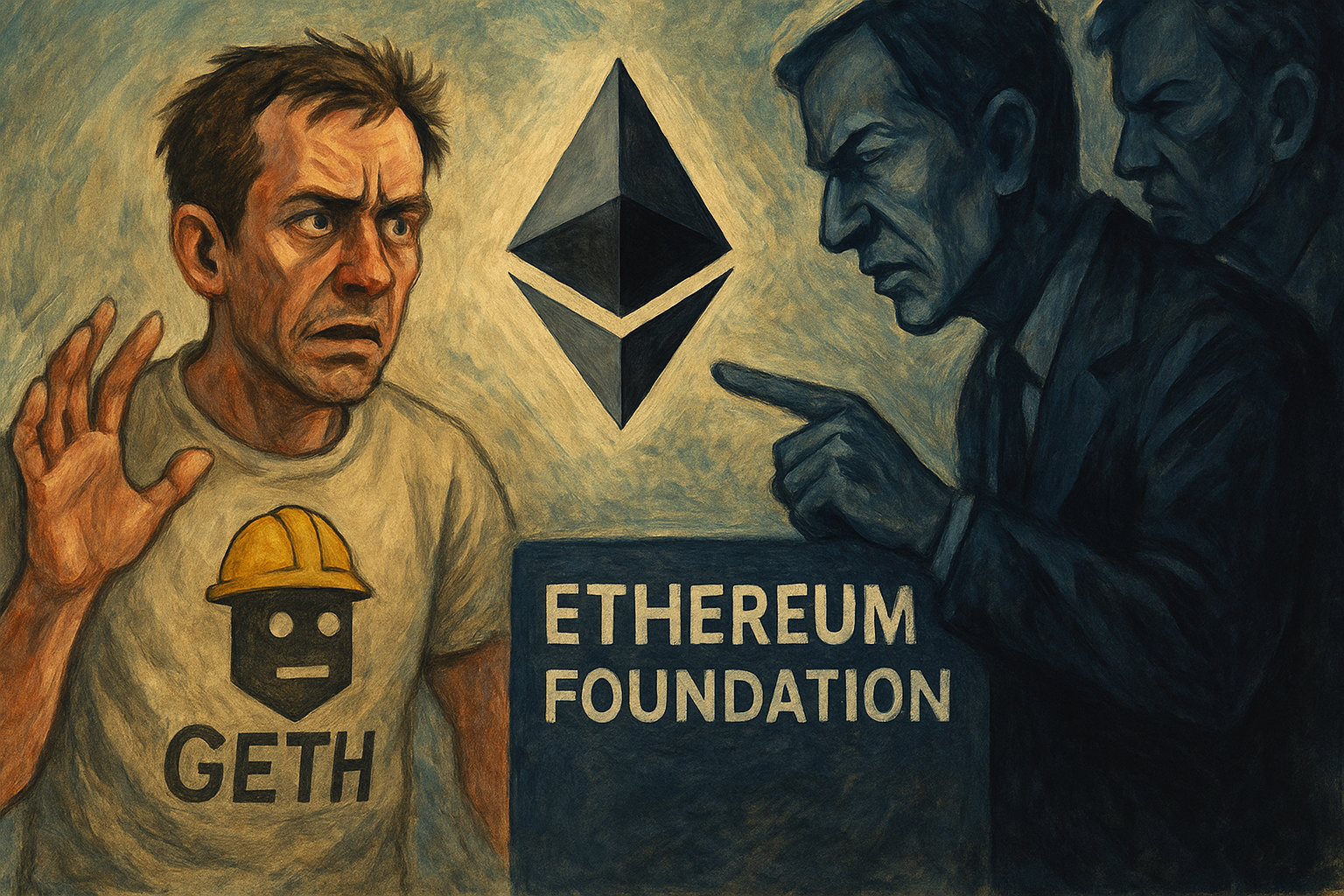Geth developer accused Ethereum Foundation of secret conspiracy

The Ethereum Foundation has once again found itself at the center of conflict following harsh statements from one of the key developers of the Geth client, Peter Sziladi. He claims that he was actually fired by the foundation under the guise of a “leave of absence” and criticized former colleague Tomasz K. Stanczak, accusing him of creating a secret second Geth team under the umbrella of the Nethermind client.
Siladi published an angry post in response to Stanczak’s statement that “there are no plans to remove Geth.” However, Siladi claims that the Ethereum Foundation has already fired four teams and is abandoning core customer support in favor of research and education. He also said he was offered $5 million to set up Geth as an external project, but declined.
Siladi’s remarks exacerbated the old problem of client dominance: Geth now serves 41% of nodes, while Nethermind serves 31%. In the Ethereum ecosystem, it is considered undesirable for a single client to control more than 33%, and the 66% threshold already poses a threat to network decentralization.
The situation sparked a reaction from the community. One of the developers under the pseudonym banteg asked Siladi why he did not use the offered resources for independent work. He replied that the team lacked the infrastructure and experience to launch a successful company.
This is not the first time the Ethereum Foundation has been criticized. Last year, the foundation came under pressure due to conflicts of interest – two of its researchers consulted for the EigenLayer project. And in early 2025, the community accused EF of lacking a strategic vision. The response was the launch of a $125 million investment program in decentralized protocols.
EF Treasury’s recently released policy, titled “Defipunk,” suggests that direct investment practices will continue. However, the tension between client developers and the fund underscores the growing dissatisfaction with how key decisions are made in the Ethereum ecosystem.




